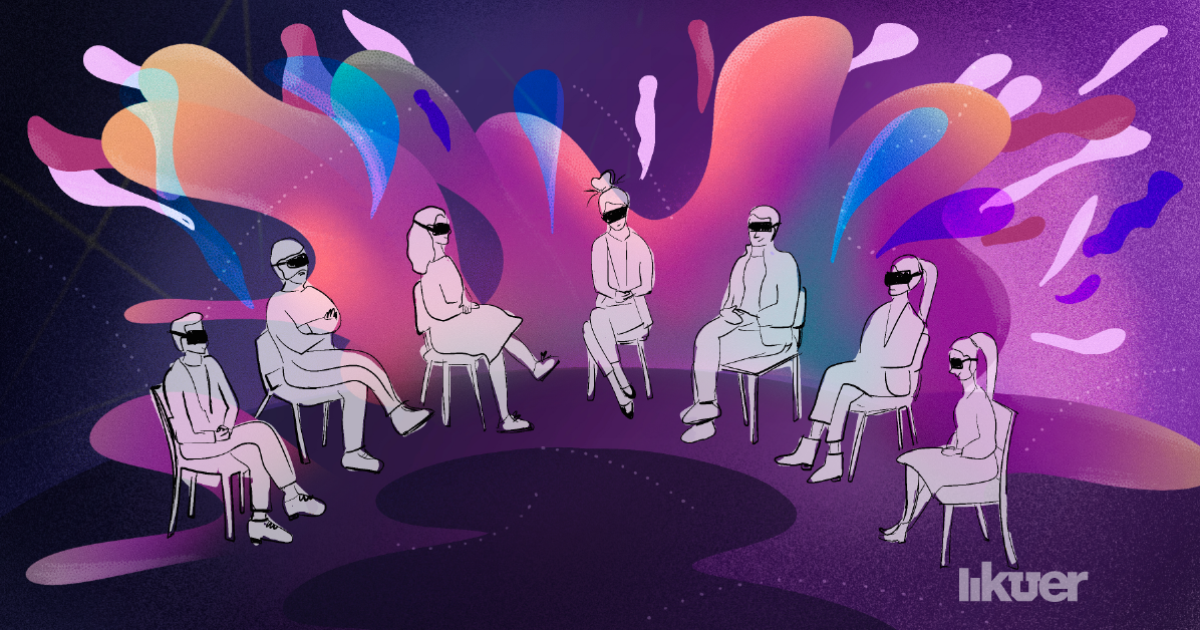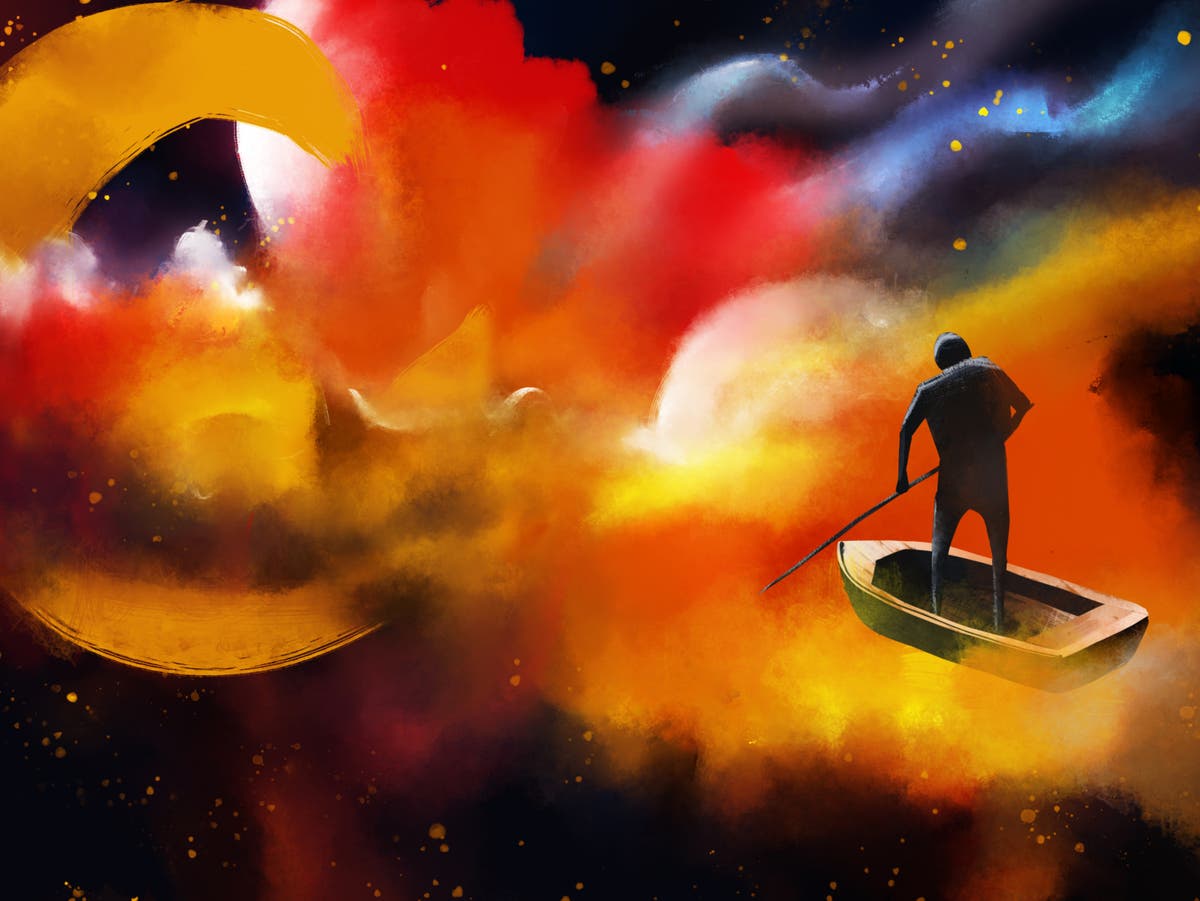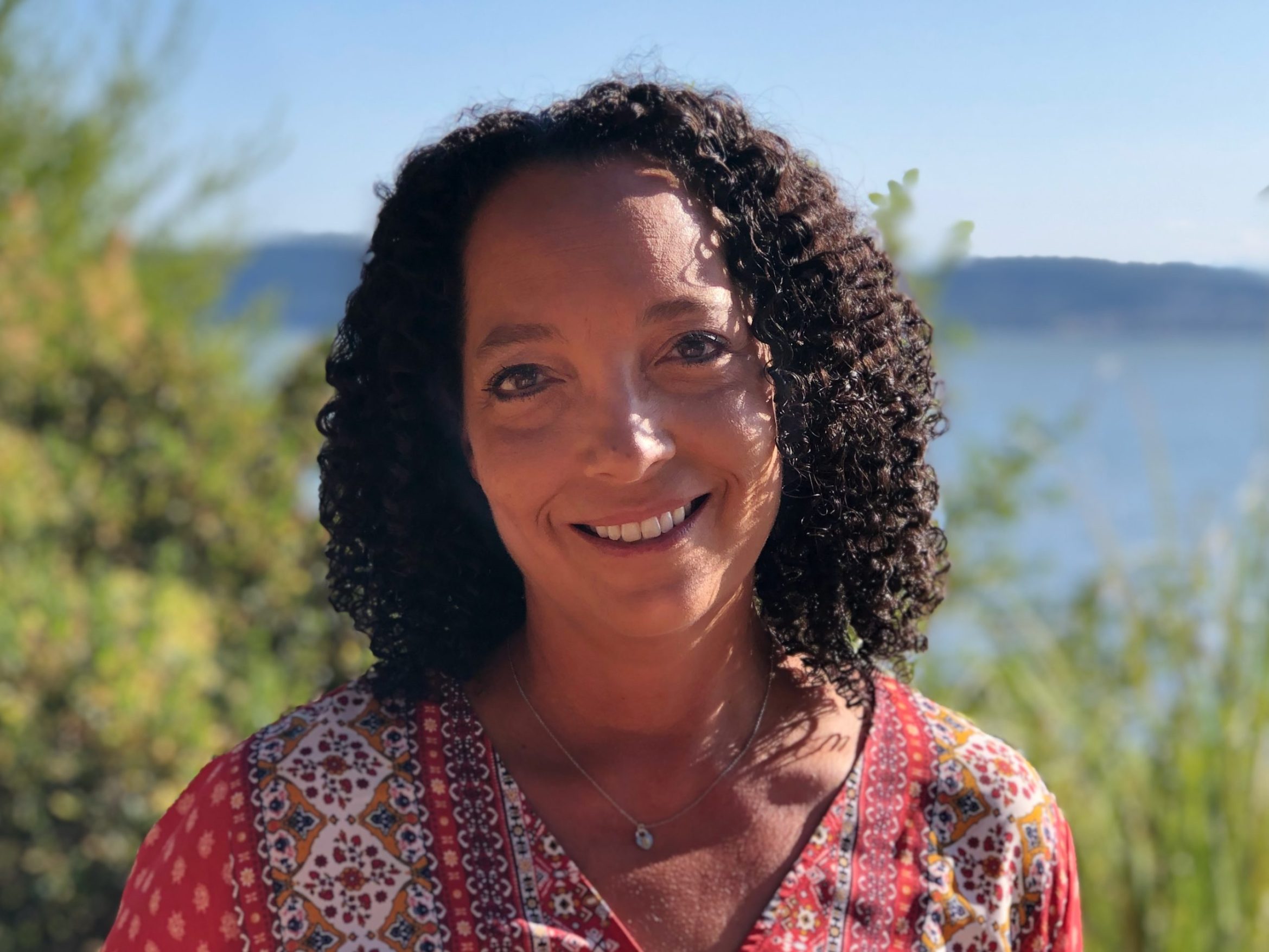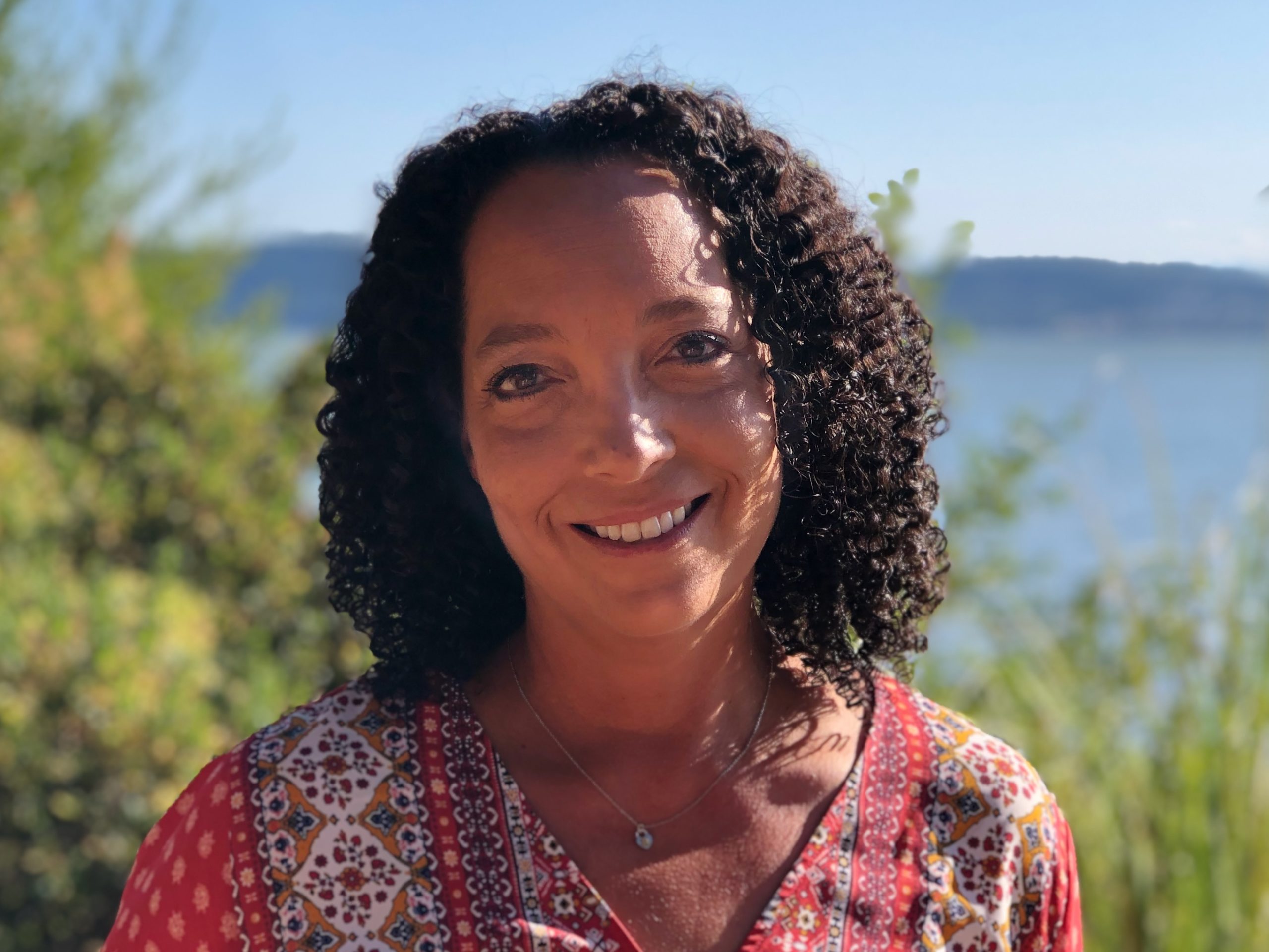The potential of psychedelics for end-of-life and palliative care
David B. Yaden, Sandeep M. Nayak, Natalie Gukasyan, Brian T. Anderson, Roland R. Griffiths | ResearchGate | 10 Jun 2022
End of life and palliative care has improved in recent decades but the psychopharmacological options available to clinicians and patients in these contexts remain limited. In particular, psychological factors such as depression, existential distress, and well-being remain challenging to address with current medications. Here, we review recent research on the use of psychedelics in clinical settings with a particular focus on patients with life-threatening diagnoses. We propose that psychedelics may provide clinicians with an additional psychopharmacological treatment in the context of end of life and palliative care
Medical advances have made it possible to better manage many of the discomforts involved in dying, but there are still few medications available to address the accompanying psychological distress. In Being Mortal, physician Atul Gawande argues that contemporary society may be somewhat historically anomalous insofar as there are few well-known contemporary norms or guidelines to dealing with the psychological side of dying. Gawande points to the historical examples of books called Ars Moriendi that were popular in medieval Europe as well as the Tibetan Book of the Dead and the Egyptian Book of the Dead that each provide cultural forms of instruction on how to accept the psychological aspects of dying. Gawande observes that the modern hospice movement provides psychological support at end of life through an interdisciplinary clinical team who are tasked with holistically addressing the biopsychosocial aspects of dying.
Such services both increase the quality of life and extend life in several terminal illnesses, contrary to impressions that hospice care reduces longevity (i.e., “giving up”). Despite their demonstrated value, these services are chronically underutilized. The proliferation of hospice services resulted in the broader palliative care movement, a specialty focused on reducing suffering and improving well-being for patients with serious, chronic, or life-threatening illnesses or injuries in general. End of life and palliative care is a quickly growing medical specialty, which addresses pain and symptom management among other biopsychosocial concerns.
EOLPC, while valuable, is limited by the psychopharmacological treatments available. Here, we review research on the efficacy of psychedelic treatments in the context EOLPC. A number of clinical trials with psilocybin have found decreased depression and anxiety as well as increased well-being in psychologically distressed patients who had a life-threatening diagnosis. In this chapter, we suggest that psychedelics could provide a novel psychopharmacological treatment capable of reducing psychological distress and supporting the psychological well-being of actively dying patients and, more generally, in those receiving palliative care.
Contemporary end-of-life and palliative care
End of life care represents a serious economic issue in contemporary healthcare and poor care can be a source of needless suffering for patients. In response to these issues, the now worldwide hospice movement was created by English nurse Cicely Saunders to address the psychological suffering of actively dying patients. Despite their value, most patients are either not being referred or failing to avail themselves of these services until mere days before death. Some of the many institutional, cultural, and psychological reasons for failing to utilize these services may be due to an inability of the clinician to accept the seriousness of the diagnosis (or to see one’s role as intervening to prolong life in all cases). Likewise, patients may fail to understand the implications of their diagnosis or to appreciate their ability to manage aspects of their own death. Patients may also believe that requesting such services would let their family down.
The subject of how one wants to die is frequently avoided, but, when asked, people express definite preferences. In general, people want to be relatively free from pain, be surrounded by loved ones, and to feel a degree of meaning and well-being throughout the dying process. When patients, family members, physicians, and other care providers were surveyed about what is valued most while dying, all four of these groups indicated at rates above 90% that freedom from both pain and anxiety were important attributes of end of life care. A substantial subset of these patients also indicated the importance of addressing religious, spiritual, and existential concerns and well-being. Additionally, most people say that they want to engage in meaningful discussions with loved ones and feel a sense of meaning, but many people experience psychological suffering that prevents such interpersonal connection.
There are a number of psychological services available to address distress in palliative care patients, such as psychotherapy, social services, access to chaplains, and integrative medicine modalities. In addition to psychotherapies like cognitive-behavioral therapy (CBT) and acceptance and commitment therapy (ACT), there are several manualized, evidence-based psychotherapies available that are tailored to the needs of EOLPC patients, such as existential interventions focused on meaning and purpose and dignity therapy. While effective to varying extents, these psychosocial treatments could be complemented by psychopharmacological treatments to enhance outcomes.
In addition to psychosocial therapies, psychopharmacological treatment currently provides an important but understudied part of end of life care. Standard of care calls for individualized assessment of treatment needs in terms of pain management, depression, anxiety, appetite, nausea, and drowsiness. Opioids are routinely used for pain management. Cannabinoids such as dronabinol may be used to stimulate appetite, reduce nausea, and mitigate anxiety. Commonly used drugs for these indications include serotonergic antidepressants, sedative hypnotics, stimulants, and neuroleptics. Studies of antidepressants in palliative care populations demonstrate small to moderate effect sizes.
In general, existing pharmacotherapies can produce some symptomatic relief for patients, but treatment often involves unwanted side effects such as decreased levels of alertness, memory problems, and impaired coordination. While the pharmacotherapies available in end-of-life contexts are largely effective at managing pain, they are less effective at managing depression. Furthermore, existential distress and patient well-being are currently only indirectly impacted by existing medications to a small degree. Additional psycho- pharmacological treatments would be valuable in the EOLPC context.
Classic psychedelics
Classic psychedelics may prove capable of effectively addressing psychological needs in end of life care. The psychedelics are a group of compounds whose action are mediated at the 5-HT2A receptor and that produce substantial changes in perception, affect, and cognition, often accompanied by a profound sense of personal meaning. The best known of these compounds are psilocybin, LSD, DMT (and the DMT-containing plant brew ayahuasca), and mescaline. Psychedelics have been used in ritual and religious contexts across a number of cultures over hundreds if not thousands of years. Psychedelics were studied in the 1950s and 1960s before burdensome governmental regulations halted research until around the year 2000.
In this review, we will focus on psilocybin which has been studied more than other classic psychedelics in clinical trials. Psilocybin (4-phosphoryloxy-N,N-dimethyltryptamine) is generally similar to serotonin (5-hydroxytryptamine) with regard to chemical structure and binding activity. Psilocybin is generally safe, well-tolerated and has limited addiction or abuse potential. Although physically safe, psilocybin experiences can be extremely psychologically challenging. Some people rate their psilocybin experiences among the most challenging of their life; however, these same individuals may nevertheless claim that the experience was meaningful and beneficial. In clinical settings with therapeutic support, persisting adverse effects have been very limited.
The subjective states associated with psilocybin have been characterized a variety of different ways, with increasing convergence across psychometric self-report instruments and qualitative research. The Five-Dimensional States of Consciousness assesses several dimensions of changes to subjectivity that occur from psilocybin, including oceanic boundlessness, anxious ego dissolution, and complex imagery. Among the most therapeutically relevant mental states that psilocybin produces can be more parsimoniously described as a “mystical-type”experience, an altered state of consciousness classically described by William James and elaborated by other scholars such as Stace. The mystical experience is most frequently measured in psychedelic research using the Mystical Experience Questionnaire, which includes sub-scales to measure a sense of unity, reverence, and authoritative truth, positive emotions, transcendence of time/space, and ineffability.
Psilocybin may also produce experiences of therapeutic relevance characterized as psychological insight and which can be assessed with the Psychological Insight Questionnaire. Notably, the majority of participants at Johns Hopkins who have experienced high-dose psilocybin in clinical research report that this experience is among the most meaningful of their entire lives. Overall, there is substantial evidence that the subjective effects of psychedelics are an important factor in their therapeutic effects.
Among the first studies in the contemporary era of clinical psychedelic research was one that administered psilocybin to healthy psychedelic-naïve participants and examined changes to well-being. This study compared psilocybin to an active control (methylphenidate) condition in a randomized controlled trial (RCT). Results from this study showed large improvements in various measures of well-being such as mood, life satisfaction, relationships, and meaning, which persisted for more than a year, and were mediated by the degree of psilocybin-associated mystical experience.
In addition to the aspects of well-being mentioned above, in a number of clinical trials with psilocybin, participants have reported enhanced spiritual well-being as a persisting positive effect from their experience. The improvements to spiritual forms of well-being is of particular relevance for end of life contexts, as patients report preferring that this psychological domain is addressed while dying. Spirituality has been defined in a number of ways, and while religious and otherwise supernatural concepts are commonly part of such definitions, supernatural beliefs need not necessarily be part of spirituality. For example, the Death Transcendence scale measures the extent to which one believes that one’s self will survive beyond bodily death through several different possible means: the memories of family and friends, the work that one has contributed to society, by becoming part of nature, religious/spiritual conceptions of the afterlife, and/or through a sense of unity with all things. This measure is one way of conceptualizing well-being and a healthy cognitive mindset regarding one’s own death in a way that could be considered broadly “spiritual”but without necessarily including supernatural concepts. Griffiths et al. showed that a measure of death transcendence was increased after psilocybin.
Psilocybin has shown promise for treating several disorders spanning several diagnostic categories. An open-label trial (N¼26) demonstrated initial safety and feasibility of addressing treatment-resistant depression with up to 25 mg of oral psilocybin with psychological support. A subsequent RCT (N¼24) showed marked decreases in depression among moderately to severely depressed participants compared to a waitlist control using a similar intervention A more recent head-to-head RCT (N¼59) provided data suggesting that psychological support plus two doses of psilocybin 25 mg was not superior than psychological support plus daily escitalopram (a widely used serotonin reuptake inhibitor) on the primary endpoint assessment. While the secondary outcomes favored psilocybin, these were not corrected for multiple comparisons so must be cautiously interpreted as exploratory findings. There appears to be some trans-diagnostic efficacy with psilocybin, as preliminary data also suggest the potential for demonstrating efficacy in the treatment of substance use disorders and possibly obsessive-compulsive disorder (OCD).
In summary, psychedelics are a class of generally well-tolerated and largely non-addictive psychoactive substances that have demonstrated therapeutic or otherwise positive effects under a number of experimental conditions. There is evidence of potential efficacy across a range of psychiatric disorders and psychedelics are currently being tested for a wider range of applications, including EOLPC contexts.
Psychedelics in palliative care and end-of-life contexts
Beyond increasing well-being in healthy volunteers and reducing mood and substance use disorders in clinical populations, psychedelics have been specifically examined in the context of coping with a life-threatening cancer diagnosis. Thus, there is evidence bearing directly on our primary topic, which we review in more detail below.
Palliative care and end of life contexts were among the first considered clinical use cases of psychedelics in the previous wave of research. Kast conducted the first two studies of LSD in patients who were terminally ill. In the first, 80 patients with terminal cancer and a life expectancy of weeks to months were administered 100 mcg IM LSD under open-label conditions. Patients reported an improvement in mood that persisted about 10 days before declining again. A follow-up study involved treatment of 128 patients with similar inclusion criteria and design. Several were quite ill inpatients, with six dying in the one-week observation period before drug administration. This follow-up study showed a transient elevation of mood, and improved attitudes toward death that were evident at 3 days, but not 10 days.
Grof et al. reported on 31 cancer patients with at least 3 months life expectancy who received open-label LSD PO 200–500 mcg under supportive conditions with preparatory and integration sessions. This report showed statistically significant baseline to post-treatment improvements in depression, fear of death, and isolation following the experience, but did not assess how durable these were.
In the contemporary era of psychedelic research, Gasser et al. performed the only modern trial of LSD in patients with diagnoses of life-threatening illnesses. Patients were required to have an advanced-stage potentially fatal illness with a probability of survival >6 months and meet criteria for a DSM-IV anxiet disorder or score 40 on either the state or trait scale of the State-Trait Anxiety Inventory. Of 12 patients, five met criteria for GAD, 6 for MDD, 1 for dysthymia 1 for PTSD, and 2 for panic disorder (these were not mutually exclusive). Patients were randomized to two sessions of 200 mcg or 20 mcg LSD. Those who receive active placebo had the option to later receive open-label 200 mcg LSD. The study showed significant decreases in anxiety within the high-dose group from pretreatment to the 2-month follow-up with a large effect size of 1.1. In contrast, the low dose group (n¼4) demonstrated an increase in anxiety over that same time period. Between the two groups, state anxiety was statistically significantly lower in the high-dose group and trait anxiety was non-significantly lower at 2 months.
In contemporary research with psilocybin, at UCLA, Grob et al. conducted a study with patients who had been diagnosed with advanced-stage terminal cancers (prognoses of 6 months to 1 year) who also had DSM-IV diagnoses of acute stress disorder, GAD, anxiety disorder due to cancer or adjustment disorder with anxiety. The study was a placebo-controlled RCT within-subject crossover with 12 participants. Niacin was used as placebo and 0.2 mg/kg psilocybin (14 mg for a 70 kg person –a modest dose) was used as the active dose. While this pilot study established the safety of treating anxiety in advanced cancer patients with oral psilocybin, there were no statistically significant group differences in anxiety or depression at follow-up timepoints.
At Johns Hopkins, Griffiths et al. conducted a larger study (N¼51) also in a population of patients who had received a life-threatening cancer diagnosis. This trial included patients with an active cancer (e.g., stage III or IV) with a poor prognosis or disease progression or recurrence (n¼33) or the possibility of nrecurrence. In addition, they had to have a DSM-IV diagnosis of GAD, acute stress disorder, PTSD, mild or moderate MDD, dysthymic disorder, or adjustment disorder (with a variety of qualifiers). This study compared a very low placebo-like dose of psilocybin (1–3 mg/70 kg) to a large dose of psilocybin (22–30 mg/70 kg of body weight. Participants in the high-dose psilocybin group, compared to the placebo-like control group, reported higher levels of well-being as well as lower levels of anxiety and depression at 5 weeks. For the majority of the sample, these changes persisted for 6 months. This study also included observer ratings of the participant who were blinded to condition, and these observers (e.g., friends, neighbors) reported improvements in participants who had received psilocybin. As has been reported in several psilocybin trials, self-reported subjective qualities of the drug administration session predicted positive persisting effects.
At NYU, Ross et al. conducted a study with participants (N¼29) who had a life-threatening cancer diagnosis and a DSM-IV diagnosis of acute stress disorder, GAD, or adjustment disorder with anxiety and/or depression. This study initially began recruiting terminally ill patients with stage IV cancer, but later broadened the inclusion criteria to include participants in remission. Ninety percent of patients met criteria for Adjustment Disorder, and the remaining 10% did for GAD. In this randomized placebo-controlled crossover study, participants who received a single session of psilocybin 0.3 mg/kg (e.g., 21 mg for a 70 kg person) showed reduced anxiety, depression, and cancer-related demoralization, compared to a niacin placebo group. These findings persisted at 6-month follow-up. This study also found improvements in demoralization and hopelessness, constructs highly relevant to end of life contexts. At about 6 months after the study, the majority of the sample indicated that their psilocybin session was among the top five most meaningful experiences of their life. Many of these findings persisted at 4.5-year follow-up.
At UCSF, Anderson et al. conducted a pilot study (N¼18, in 3 cohorts of 6) of psilocybin-assisted group therapy for older long-term AIDS survivor (LTAS) men with moderate-to-severe demoralization. Such individuals live with a chronic life-threatening illness (i.e., HIV), and many have been acutely ill at various times in their disease course. Of the enrolled participants, baseline evaluation found that 7 met SCID-5 criteria for GAD, 5 for MDD, 3 for borderline personality disorder, and 6 had a history of a life-threatening malignancy. Participants underwent 4 pre-drug and 4–6 post-drug group therapy sessions; psilocybin was administered individually (without other group members present) at 0.3 mg/kg po to 7 participants, and then 0.36 mg/kg to the remaining 11 participants. Feasibility was demonstrated and the intervention was found to be relatively safe with no psilocybin-related serious adverse events detected in the trial, although 2 unexpected adverse reactions occurred, 1 participant discontinued treatment due to an adverse reaction, and 14 participants experienced adverse reactions that were at least moderate in severity.
The safety, feasibility, and clinical potential demonstrated in these three recent studies with psilocybin and one recent study with LSD continue to be evaluated in ongoing research. It will be important to better understand therapeutic mechanisms, contraindications, and optimal dosing and psychological context conditions. Because psilocybin and LSD administration may produce an intense and challenging psychological experiences with low probability but significant risks, it is important to proceed with caution. It nevertheless appears likely, assuming that additional studies result in similar findings, that psilocybin may be an effective medication for palliative care and end of life contexts.
Clinical considerations
Psychedelic substances have the potential to be a powerful tool in the context of EOLPC. However, the nature of these substances raises a number of clinical considerations including both opportunities and challenges.
One area of concern is the risks associated with psychedelics in the context of common physical symptoms and medical conditions in palliative care populations. Much of the research on psychedelic-assisted treatment to date, even in patients with advanced cancer, has been in relatively medically stable individuals who are able to engage in outpatient care. In a hospice setting, it is possible that psychedelics may exacerbate nausea or diarrhea, breathlessness, or insomnia. Of particular importance is whether psychedelics may worsen or precipitate delirium in vulnerable patients. Barrett et al. found that global cognitive impairment was not observed in healthy volunteers at doses of psilocybin up to 30 mg/70 kg. However, deficits in individual cognitive domains were present and dose-dependent. Such impairments may be more pronounced in palliative care populations who are more at risk of developing delirium.
A second area of concern is the safety of psychedelics when co-administered with other medications commonly used at the end of life. Serotonergic antidepressants are typically contraindicated for co-administration with psychedelics due to the potential for blunting of subjective effects, as well as a theoretical risk of serotonin syndrome. Thus, most currently approved protocols require an antidepressant washout period of 4–5 half-lives prior to administration of a psychedelic. Relatively little is known about effects of co-administration with other psychotropic drugs but it is likely that other clinically significant interactions exist. In healthy volunteers, for example, haloperidol co-administration with psilocybin was associated with derealization experiences associated with arousal and anxiety, and administration of psychedelics to individuals using lithium has been associated with seizures. Other drugs commonly used in this population that may be problematic when co-administered with psychedelics include corticosteroids and stimulants given their risk of precipitating mania, as well as serotonergic agonists such as ondansetron, since they may theoretically contribute to serotonin syndrome. While these possible risks have not been systematically evaluated, they are nonetheless worth considering.
A number of other areas of concern remain regarding the generalizability of psychedelic treatments. While safety guidelines have been provided ongoing research has generally not included individuals with a family history of psychotic or bipolar disorders. The end of life context and the stressors involved may provide a particularly stressful context which may increase the likelihood of adverse responses, although this has not yet been studied. Additionally, there may be an increased tendency to pair psychedelic treatments with non-evidence-based and fringe treatments in this context, which should be cautioned against in favor of more evidence-based treatments.
Findings suggest that psychedelics may have analgesic properties, which may have important implications in palliative care. Current mainstay analgesia treatments such as opioid medications have the risk of sedation and other side effects. Ramaekers et al. found that LSD acutely reduced subjective discomfort and pain ratings in healthy volunteers, and that this effect was achieved with relatively low doses (10–20 μg), which might have the added benefit of lower risk of cognitive impairment when compared to high doses.
Psychedelics have been delivered in the context of various psychotherapeutic modalities and have the potential to be integrated with existing evidence-based psychotherapies specific to palliative care. Therapeutic life review and meaning centered therapies, for example, closely resemble the life review process commonly done during preparatory visits in many psychedelic clinical trials.
The end of life context usually involves religious and existential contemplation. While psychedelics are sometimes claimed to facilitate such contemplations, it is possible that psychedelics could interfere with this process or appear to some to interfere with what might be considered a “natural”process. Indeed, the end of life context offers a number of bioethical considerations and the possibility of psychedelic treatments may further complicate this process. Relatedly, psychedelics present a number of informed consent concerns. Smith and Sisti argue that informed consent for psychedelic treatment should include the possibility of changes to one’s belief system and sense of identity. There are reasons for concern regarding the possibility of religious/spiritual belief change as a result of using psychedelics from some self-report surveys, although these do not represent population base rates and other samples have not found such associations.
While risks must be weighed, it is also important to consider the positive potential for psychedelic experiences and the costs of preventing patients from having such experiences. Earp argues that psychedelic experiences constitute an important form of enhancement that goes beyond the reduction of suffering. Specifically, Earp proposes that psychedelics could promote improvements in one’s relationships.
There is good evidence for this, as a number of psychedelic studies report improvements in social relationships. The relational enhancements provided by psychedelic treatments could open an important window for interpersonal connection with family and friends during a time that will be the last opportunity for patients to have such meaningful moments with loved ones. Additionally, Earp points to other kinds of enhancements, such as experiences relevant to one’s belief system or worldview. Empirical evidence indicates that experiences resulting from psychedelic substances are among the most meaningful of one’s entire life. Denying such experiences to individuals when, perhaps, they need them most is a significant ethical issue to consider. There are other clinical considerations regarding how psychedelics could be safely and ethically administered in end of life settings, such as whether there are evidence-based protocols to safely administer such treatments in end of life contexts. While it is likely the case that aspects of evidence-based psychotherapies apply generally to psychedelic treatments. it remains unclear how such therapies should be modified when applied to administering psychedelics in palliative care and end of life contexts.
An important unresolved issue with the prospect of administering psychedelics at end of life has to do with their specific indication. For example, three of the recent studies cited above involving psilocybin use medical and psychiatric inclusion criteria that do not fully overlap. More work is needed in order to specify the indications that are clinically appropriate and specific for end of life care, and will be acceptable for approval by regulatory authorities.
Conclusion
In this review, we find evidence suggesting possible efficacy of classic psychedelics in treating a variety of psychiatric conditions including end of life distress. Psychedelic treatments can provide experiences of meaning and well-being amidst the process of dying that are highly valued by patients and their families. For some, this treatment could potentially provide little benefit and add additional stress to an already difficult time, so further research is needed in order to minimize such risks. For others, such experiences may be among the most important of their entire lives and could represent a positive intervention with immense psychological value amidst one of life’s most difficult moments – its end.
From the article (including references) here :













